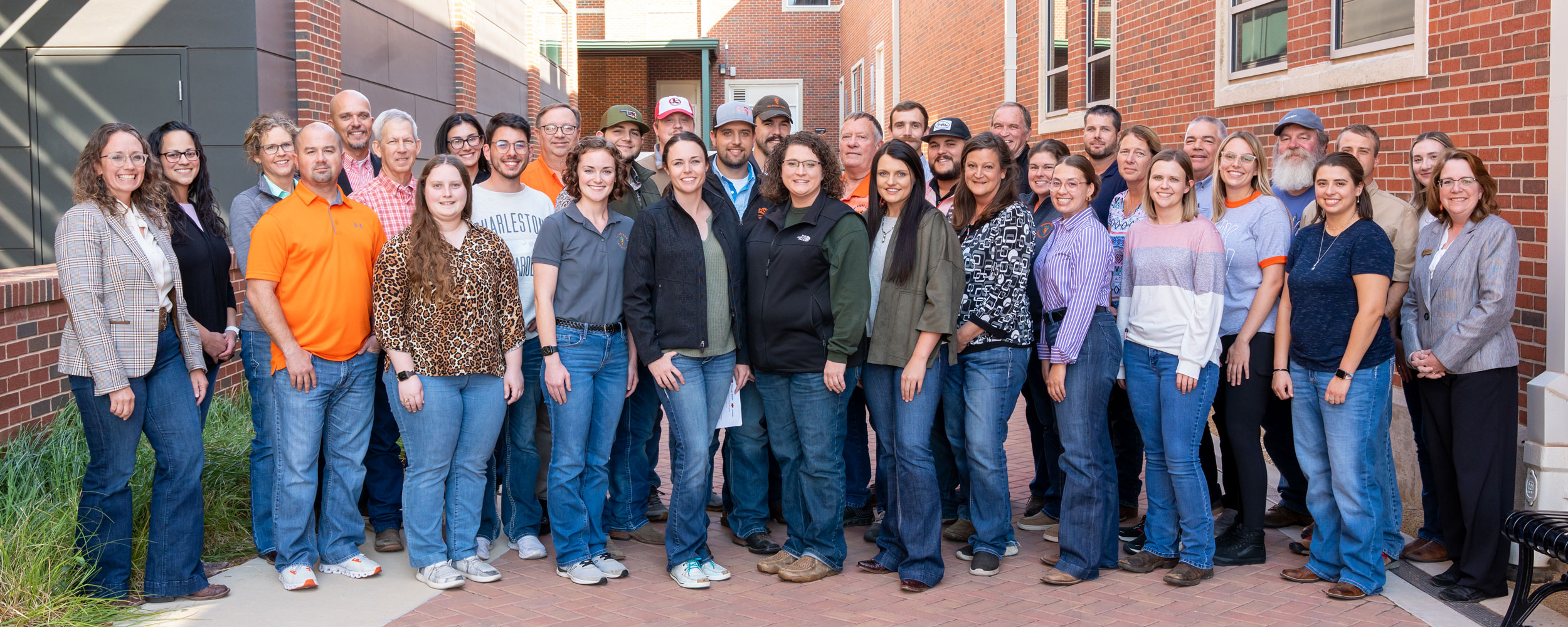
OSU Vet Med expands rural veterinary interest/knowledge with IBC program
Thursday, October 20, 2022
Media Contact: Kaylie Wehr | Coordinator, Marketing and Public Relations | 405-744-6740 | kaylie.wehr@okstate.edu
In small towns all across America, veterinarians are a key part of the community fabric. They play a critical role in animal health, food safety and supply, public health and education.
The current shortage of rural veterinarians has brought many challenges to Oklahoma communities, but the Oklahoma State University College of Veterinary Medicine administration and faculty have worked diligently to overcome these challenges and provide effective solutions.
In 2019, the OSU CVM received a U.S. Department of Agriculture National Institute of Food and Agriculture Veterinary Services grant in excess of $235,000. These funds led to the establishment of the Integrated Beef Cattle Program for veterinarians to enhance practice management, services, leadership and communication.
“OSU’s Integrated Beef Cattle Program is a cross-disciplinary partnership across veterinary medicine, animal science, agricultural economics, Extension and agricultural leadership,” said Dr. Rosslyn Biggs, OSU CVM director of continuing education and OSU Extension beef cattle specialist. “This program addresses the current challenges in veterinary medicine and puts 20 practicing veterinarians alongside 20 veterinary students to help them develop various skills.”
The program was created to gather necessary data to better understand the shortage and needs of veterinarians serving the beef industry; train current rural practitioners and veterinary students on value-added services; and encourage veterinary students to enter rural practice by providing networking and mentoring opportunities for them to connect and build relationships with rural veterinarians.
In the fall of 2020, a survey was administered to veterinarians, veterinary students and beef cattle producers to assess needs specific to Oklahoma. This included average herd sizes, travel distances and producer needs not being met due to the limited number of veterinarians in rural areas. The survey helped inform content to be included in the Integrated Beef Cattle Program learning modules.
The first class began in January 2022 and finished in October.
“Although we are early in the program, we are starting to see impactful connections between the participating veterinarians and our students,” Biggs said. “Students are participating in externships with veterinarians they met through the program.”
Mandy Lawson, a second-year OSU veterinary student, completed an externship at Cross 7 Veterinary Clinic because of a connection she made with Dr. Elizabeth Fullbright in the program.
“Getting to spend time in different rural practices is an invaluable experience as a student throughout our DVM program,” Lawson said. “I know the relationships and professional networking this program has provided are going to continue to serve me for the duration of my career in veterinary medicine.”
Additionally, the program has helped fourth-year veterinary student Wyatt Catron prepare for his next steps after completing his degree.
“The benefits I’ve seen from this program have been networking with established veterinarians who are doing the same type of medicine I’d like to practice and the knowledge I’ve gained from the presentations,” Catron said. “Overall, it’s been a really beneficial program and I believe I’ll be a better veterinarian for it.”
Students weren’t the only ones who capitalized on the program’s networking component.
“I don’t know of any other program I could be a part of where I would get to meet so many different people in the beef industry,” said Dr. Megan Beavert, a participating veterinarian. “I now have connections I can call when I need. I know I don’t have to be an expert in everything because I know experts in those fields I can contact. As a new graduate, that helps me better serve my producers.”
In addition to networking connections, veterinarians learned practical skills they can use in their practices.
“Veterinarians are coming back to the next module (session) and explaining how they applied the information or skills we taught in the previous sessions for the benefit of their veterinary team and clients,” Biggs said.
Modules included topics such as leadership, communication, practice management, nutrition, mental health resources, reproduction and profitability.
Program participant Dr. Dalton Newell appreciates everything he learned, knowing it better equips him to serve his clients.
“The Integrated Beef Cattle Program taught me how to be value-added, not only to our practice, but more importantly to our clients and their bottom line,” Newell said. “Along with leadership and networking, I really look forward to presenters who talk about veterinary medicine as a business. Our job as veterinarians is to take care of people through the treatment of their animals.”
Additionally, students are learning practical knowledge they can combine with classroom instruction.
“This program has been foundational in bringing real-world production medicine back to the classroom,” Lawson said. “It’s going to be extremely beneficial to have these resources and connections to go back to as I complete my DVM.”
The combination of classroom knowledge, hands-on education and networking connections is an asset for students to become well-rounded veterinarians.
“This program has been so much more than just beef cattle medicine,” said Will Shelby, second-year OSU veterinary student. “We’ve gotten to learn about managing a practice while networking and building relationships with experienced veterinarians.”
Practicing DVMs and students benefited from the program through the connections they made and the knowledge and skills they learned.
“The launch of the program has elevated the discussion around veterinary medicine and, in particular, the need for greater numbers of food supply veterinarians in the state and region,” Biggs said.
As OSU looks to the future, the need for rural veterinarians is a global issue that must be addressed.
Photos and Story By: Taylor Bacon | Vet Cetera
